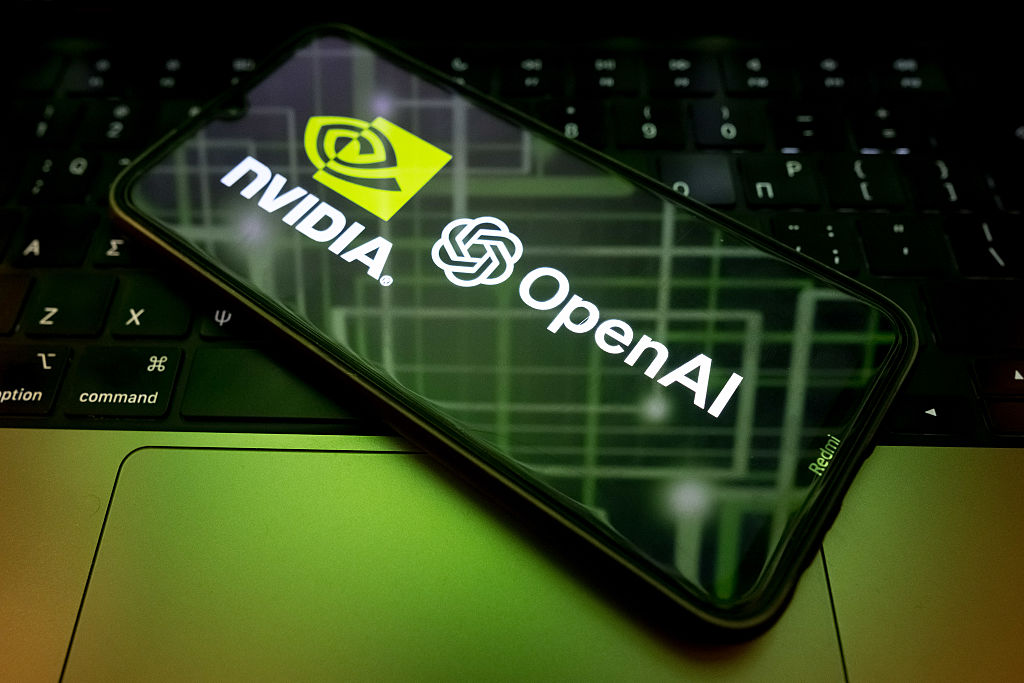Nvidia recently announced the largest private investment in history: an eye-popping $100 billion into OpenAI. But this outlay isn’t about empowering people or enabling breakthroughs, as Sam Altman said; this kind of vertical integration is about money, control, and power. It’s the latest step in a decades-long campaign by Big Tech to capture every layer of the digital economy—from chips to clouds to the apps you use. A few trillion-dollar companies now comprise an AI oligopoly that poses major risks to competition and to our national security.
[time-brightcove not-tgx=”true”]
They’re building an AI economy where the same companies own the infrastructure, the technology, and its applications—and where no one else gets a fair shot. Nvidia, the most valuable company in the world, has long controlled the market for designing graphics processing units, or GPUs, which are the kind of chips needed for AI.
Amazon, Microsoft, and Google own two-thirds of cloud computing, where chips are used and where AI models are built. Each of these three so-called hyperscalers are among the top five most valuable companies in the world. At its core, the cloud is a model analogous to electricity, water, and other utilities; computing is a commodified service, generated at a remote location (in this case, a data center) and delivered through a network (here, the internet). Unlike other utilities, however, hyperscalers are unregulated, allowing them to pick winners and losers among their customers. For most developers, that means lock-in and dependency, which became normal before today’s AI boom and is assumed.
At first, OpenAI and Anthropic seemed like they were ready to challenge Big Tech. Instead, they fused with the silicon giants. What once looked like healthy competition has become a carousel of Big Tech ownership, with upstarts absorbed before they can become real rivals. OpenAI’s biggest investors are Microsoft and now Nvidia. Anthropic’s biggest owners include Amazon and Google. Each has also acquired or invested in countless AI startups.
Tech companies often dub these dealings “partnerships,” but regulators shouldn’t. These are clear moves for cross-ownership, industry consolidation, and sectoral domination. It’s the same strategy Big Tech has used for decades: Facebook bought Instagram to kill competition. Google bought DoubleClick to dominate ads. Amazon used its marketplace data to copy and undercut sellers. Microsoft pioneered this action in the 1990s by crushing Netscape to protect Internet Explorer. Apple used its App Store to tax rivals. The AI playbook is no different, and it’s literally the same companies that have already used these tactics to great success.
When the same few companies own the entire tech stack, they stop competing and start colluding. The Federal Trade Commission found cloud providers prioritizing scarce GPUs for companies in which they invest over independent startups. If you’re a startup, these same few companies can be simultaneously your suppliers, investors, customers, and competitors. This creates unavoidable and intolerable conflicts of interest that poison the competitive dynamics that healthy markets require.
History tells us how this story ends and what to do about it. A century ago, railroads snapped up coal mines and gave preferential treatment to their own shipments; Congress forced the rail conglomerates to divest from coal. Later, telecom companies were required to let competitors interconnect rather than wall off their networks. Banks were structurally separated from commerce to avoid conflicts of interest. In the past, lawmakers stepped in when private empires monopolized essential infrastructure, and it’s long been time to do so in the digital economy. The emergence of Big AI makes the case crystal clear.
The first step to a healthier market is to break up companies that are vertically integrated, so that platforms don’t compete with their customers. Chips must be independent from clouds, and clouds must be independent from AI models. Those models should compete on merit, not on whether they’re tethered to a trillion-dollar sponsor. Regulators should reject Nvidia’s OpenAI investment outright. And Congress should pass legislation to break apart other parts of the Big AI ecosystem—including undoing investments and other partnerships that look like acquisitions designed to evade regulatory scrutiny—before it cements even more control of the digital economy.
Undoubtedly, Big Tech will cry that regulation would stifle innovation. Don’t believe it. The real innovation being stifled today is the innovation that’ll never bloom, suffocated by vertical integration and acquisitions disguised as partnerships. If lawmakers fail to act, the future of AI will be written not by open competition or bold new ideas, but by the same handful of firms that already dominate the products where AI may be most economically beneficial: e-commerce, search, and productivity software.
Americans once broke up railroads, reined in banks, and forced telecom to open its networks. The tools are there, and the precedents are clear. What’s missing is political will to break up Big AI before it breaks us.

